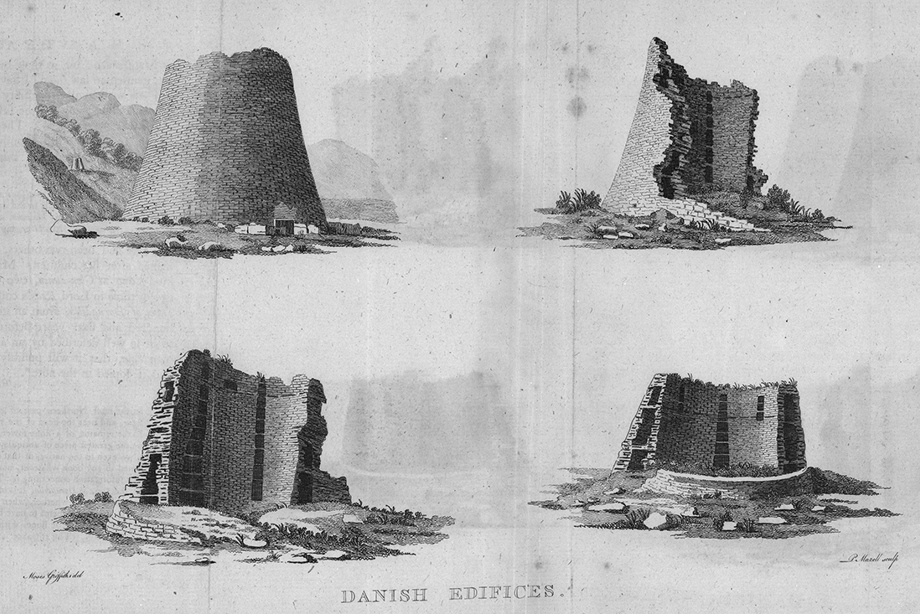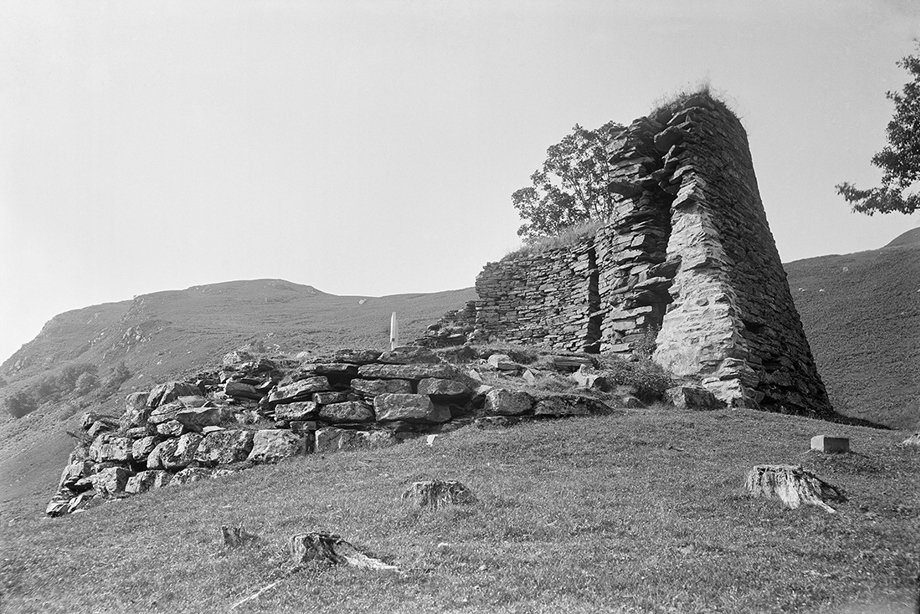Ruins have a seductive quality that rests in a precarious middle ground between their former purpose and impending collapse. They highlight the passage of time and the destructive natural forces that all things ultimately succumb to.
Beveridge was charmed by the beauty of ruined structures across Scotland and we can see he took great care in capturing the old ways of life through them. Like many of his romantic Victorian contemporaries, he believed these beautiful decaying monuments should be documented as evidence of a fading past.
However, his tastes and interests meant that a very specific aspect of history was recorded. What kind of ruined structures do you find beautiful or important, and which would you record before they are lost?
Engraving of views of Dun Telve and Dun Troddan, Highland
Brochs are a type of Iron Age tower distinctive to Scotland. Dun Telve and Dun Troddan in Kyle are two excellently preserved examples situated only 500m apart which is notably rare. This engraving shows us multiple views of how the Brochs looked in the mid 1700s, giving a detailed representation of the exposed core.
By exploring ancient structures through drawing, the artist gives an impression of the impressive design and engineering involved in their construction.
Dun Troddan, Highland
Beveridge took an active interest in archaeological ruins and monuments, especially brochs, making sure to include visits to them during his explorations.
The Broch at Dun Troddan stands on a terraced area of hillside in Glenelg with its remaining face reaching over 7m high. In this photograph, Beveridge faithfully depicts its ruination, but in others he played with perspective to highlight their imposing and impenetrable Iron Age appearance, displaying most intact facades only.
Dryburgh Abbey, Scottish Borders
The elegant ruins of Dryburgh Abbey have seduced several well known individuals, such as the novelist Sir Walter Scott.
Beveridge captured many photographs of this site, showcasing a delicate balance of natural and architectural beauty. It is regarded as of high archaeological importance, but its aesthetic merits are also significant. Its restoration as a romantic ruin by the 11th earl of Buchan in the late 19th century is also an important part of its biography that can help us understand fashions and tastes of different eras.
Renaissance front in ruinous condition, Craighall Castle, Ceres, Cupar
Craighall Castle was an early 17th-century mansion built for Sir Thomas Hope, and altered and enlarged in 1697-9 to designs by Sir William Bruce.
By the time Beveridge came to photograph it, only the south front remained as a theatrical facade. Photographs such as these are all that remains after it was demolished in 1955, capturing its existence as a ruin with no purpose other than standing as a monument to another time.
Ruined Chapel, Kirkapol, Outer Hebrides
This roofless ruined chapel in Kirkapol, Tiree was once dedicated to St Columba, as was the larger church that lies nearby just out of shot. Still standing today, it is believed to date from the late 14th century, though a lack of architectural details makes it difficult to date precisely.
While less grand than many of the ruined churches and abbeys that Beveridge enjoyed photographing, this picturesque chapel reflects the small remote community it served.
Continue the exhibition
Find out more about Relics, Ruins and Ways of Life.





